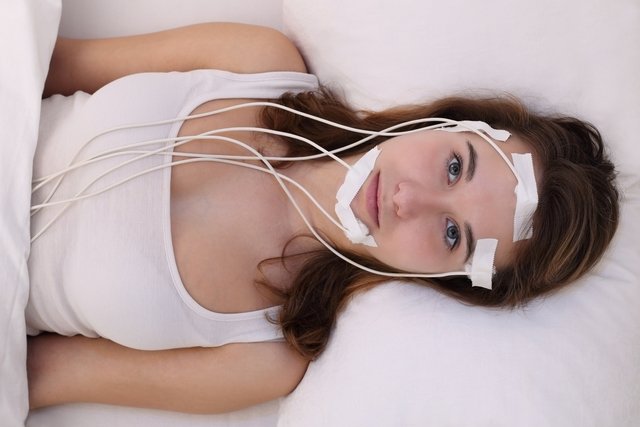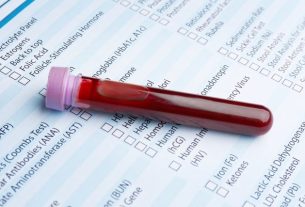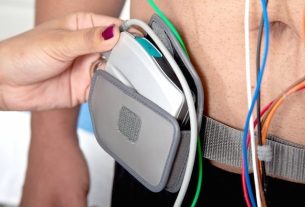Polysomnography is an exam that is used to analyze sleep quality and diagnose sleep-related diseases, and can be indicated from 2 years of age. Therefore, this exam may be recommended by the doctor to identify sleep disorders, such as apnea, excessive snoring, restless legs syndrome or too much sleep during the day.
This exam is painless and is normally carried out in the hospital or in specialized clinics, however in some cases polysomnography can be carried out at home using portable equipment, requiring the professional to be present during the test.
The result of the polysomnography exam is indicated in a report that contains all the parameters that were evaluated during the exam, such as heart rate, eye movement, breathing pattern and muscle activity.

What is it for
Polysomnography is an exam that assesses the quality of sleep, being useful for identifying sleep-related illnesses and, thus, being able to initiate the best treatment, preventing complications.
To identify sleep disorders, the patient sleeps with electrodes fixed to the body that allow the simultaneous recording of several parameters such as brain activity, eye movement, muscle activity and breathing pattern.
When is indicated
The polysomnography exam is indicated in the following situations
- Obstructive sleep apnea;
- Excessive snoring;
- Insomnia;
- Excessive drowsiness;
- Sleep-walking;
- Narcolepsy;
- Restless legs syndrome;
- Arrhythmias that occur during sleep;
- Night terrors;
- Bruxism, which is the habit of grinding your teeth.
In most cases, polysomnography is performed in the hospital or in a clinic specializing in this type of exam, as the person must be monitored throughout the exam. However, in some cases, polysomnography can also be performed at home, with a portable device, which, despite not being as complete as that performed in the hospital or clinic, can be useful in some situations, as long as it is indicated by the doctor. .
How is the preparation
To perform polysomnography, it is recommended to avoid drinking coffee, energy drinks or alcoholic drinks 24 hours before the exam, avoid using creams and gels that make it difficult to attach the electrodes and not paint your nails with dark nail polish.
In addition, it is advised to continue using your usual medications before and during the exam. A tip to make it easier to sleep during the exam is to bring pajamas and comfortable clothes, in addition to your own pillow or personal items.
However, if in the days before the exam or on the day itself the person presents symptoms of flu, cold or other situations that could interfere with the exam and results, it is recommended that the polysomnography be rescheduled.
How polysomnography is performed
To perform polysomnography, electrodes are attached to the patient’s scalp and body, in addition to a sensor on the finger, so that, during sleep, the parameters that allow the doctor to detect changes suspected by the doctor are analyzed. Therefore, during polysomnography, several assessments are carried out, including:
- Electroencephalogram (EEG): serves to record brain activity during sleep;
- Electro-oculogram (EOG): allows you to identify which sleep phases are and when they begin;
- Electromyogram: records muscle movement during the night;
- Airflow from the mouth and nose: analyzes breathing;
- Breathing effort: of the chest and abdomen;
- Electrocardiogram: checks the heart’s functioning rhythm;
- oximetry: analyzes the oxygen level in the blood;
- Snoring sensor: records the intensity of snoring.
- Lower limb movement sensor.
Polysomnography is a non-invasive and painless test, and therefore does not usually cause side effects. However, in some people it is possible for there to be skin irritation where the electrodes were applied due to the glue used.
Polysomnography result
The results of the polysomnography are reported in a report that indicates all the variables measured and the changes identified during the exam. However, it is important that the person has slept at least 6.5 hours with 180 minutes of effective sleep, as less than this time is not enough to carry out the assessment, and it is recommended to repeat the test.
The results indicated in the report are the respiratory rate and the moments when there may have been an interruption, changes in eye movements, legs and brain waves. Therefore, it is important that the doctor who requested the polysomnography evaluates all the results so that the best treatment can be indicated, if necessary.
Bibliography
- DO AM INSTITUTE. Polysomnography – exam preparation. Available at: <https://institutodosono.com/wp-content/uploads/2021/08/preparo_exames_polissono_versao-web_2021_of.pdf>. Accessed on October 14, 2021
- DO AM INSTITUTE. Exams – polysomnography. Available at: <https://institutodosono.com/exames/polissonografia/>. Accessed on October 14, 2021
- BRAZILIAN SLEEP MEDICINE ASSOCIATION. Recommendations for the Diagnosis and Treatment of Obstructive Sleep Apnea Syndrome in Adults. 2013. Available at: <http://abmsono.org/assets/apneiaadulto.pdf>. Accessed on October 14, 2021
- GUIMARÃES, Gleison M. Polysomnographic Diagnosis. Lung RJ. Vol 19. 3-4 ed; 88-92, 2010

Sign up for our newsletter and stay up to date with exclusive news
that can transform your routine!
Warning: Undefined array key "title" in /home/storelat/public_html/wp-content/plugins/link-whisper-premium/templates/frontend/related-posts.php on line 12
Warning: Undefined array key "title_tag" in /home/storelat/public_html/wp-content/plugins/link-whisper-premium/templates/frontend/related-posts.php on line 13



